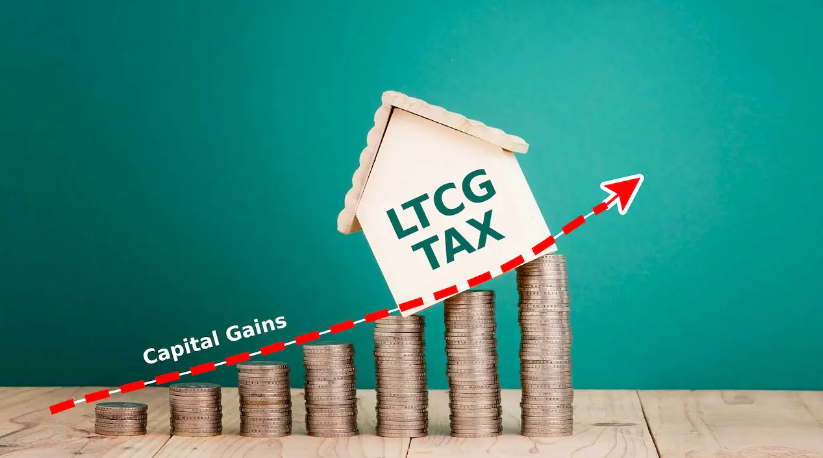Understanding LTCG Tax and Recent Reforms (GS Paper 3, Economy)

Introduction
- The Long-Term Capital Gains (LTCG) tax, a key component of India’s tax system, has recently undergone significant modifications as part of the Union Budget for 2024–2025.
- These changes, particularly the removal of indexation benefits, have stirred considerable debate among taxpayers and financial experts.
- Here’s a detailed overview of the LTCG tax, the impact of recent changes, and the broader implications for investors.
What is LTCG Tax?
LTCG tax is levied on the profits derived from the sale of assets held for a long period, usually longer than one year. This tax applies to various assets, including:
- Equities: Stocks listed on stock exchanges.
- Real Estate: Property such as land and buildings.
- Gold: Physical gold and gold-based investments.
The tax is calculated on the difference between the sale price and the purchase price of the asset. The LTCG tax rate and the method of calculating gains have historically been subject to different rules depending on the asset class and holding period.
What is Indexation?
Indexation is a method used to adjust the purchase price of an asset for inflation. The main purpose of indexation is to ensure that the gains calculated on the sale of an asset reflect the real increase in value rather than just the nominal gain. Here’s how it works:
- Cost of Acquisition Adjustment: The original purchase price of the asset is adjusted based on inflation indices to reflect the current value of money. This adjusted price is referred to as the indexed cost of acquisition.
- Calculation of Gains: When the asset is sold, the indexed cost is subtracted from the sale price to determine the capital gains. This approach helps in reducing the tax burden by accounting for inflation. For instance, if you bought a property in 2000 for ₹10 lakh and sold it in 2024 for ₹30 lakh, the nominal gain would be ₹20 lakh. With indexation, if inflation adjustments raise the indexed cost to ₹20 lakh, the real gain would be ₹10 lakh, leading to lower taxes.
Impact of the Withdrawal of Indexation Benefit
The removal of the indexation benefit, effective from the 2024–2025 budget, signifies that taxpayers can no longer adjust their acquisition cost for inflation. This change has several implications:
- Increased Tax Liability: Without indexation, the acquisition cost remains the same, leading to higher capital gains and potentially higher tax liabilities. This change could disproportionately affect those who have held assets for extended periods, as inflation would have eroded the real value of their initial investment.
- Nominal vs. Real Gains: The gains realized from asset sales may appear inflated without accounting for inflation, resulting in higher taxes even if the real value of the gains is modest.
- Impact on Long-Term Investors: Investors with long-held assets, especially those in real estate and gold, may experience a significant increase in tax bills due to the lack of inflation adjustment.
Changes in the LTCG Regime
Under the new tax regime:
- Reduction in Tax Rate: The LTCG tax rate has been reduced from 20% to 12.5%. This reduction is intended to offset some of the impacts of the removal of indexation.
- Elimination of Indexation: For assets like gold and real estate, indexation is no longer allowed. This means that gains are calculated based solely on the difference between the purchase price and sale price without inflation adjustment.
- Grandfathering Provision: For assets acquired before April 1, 2001, the fair market value as of this date will be considered as the acquisition cost. This provision is aimed at mitigating the tax burden on inherited properties and long-held assets, as it prevents retroactive tax impacts.
Government’s Justification
The government’s rationale behind these changes includes:
- Simplification : Removing the indexation benefit and reducing tax rates simplifies the tax system, eliminating the need for complex calculations and different rates for various asset classes.
- Uniform Tax Treatment: The new regime aims to create a more uniform taxation approach across different asset types, making the system more transparent and easier to administer.
- Economic Impact: The government argues that real estate nominal gains often outpace inflation, suggesting that the reduced tax rate could benefit taxpayers by offsetting the lack of indexation.
Criticism and Concerns
The new LTCG tax regime has faced criticism for several reasons:
- Absence of Grandfathering: Critics argue that the lack of grandfathering clauses—provisions that would have allowed older transactions to be taxed under the previous rules until July 2024—fails to provide transitional relief for long-term investors.
- Increased Tax Burden: The removal of indexation without corresponding transitional measures raises concerns about higher tax liabilities for long-term investors. The lower tax rate may not fully compensate for the increased tax burden due to the absence of inflation adjustment.
- Investor Sentiment: Long-term investors may feel unfairly treated by the sudden shift in tax rules, which could affect their investment decisions and financial planning.
Conclusion
- The overhaul of the LTCG tax system marks a significant shift in India’s tax landscape.
- While the reduction in tax rates and elimination of indexation are aimed at simplifying the tax regime and providing uniform treatment across asset classes, the changes have generated substantial debate.
- The impact on long-term investors, particularly those with assets held for many years, will be closely monitored.
- As taxpayers navigate these new rules, the effectiveness of the reforms in achieving their intended goals and balancing fairness will become clearer over time.


